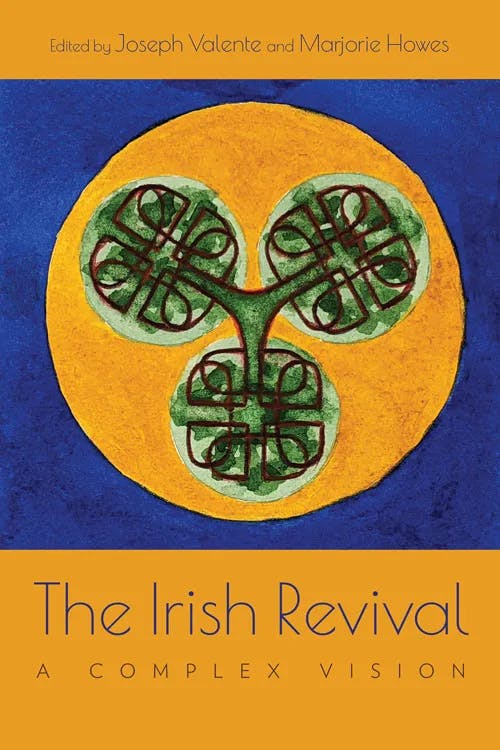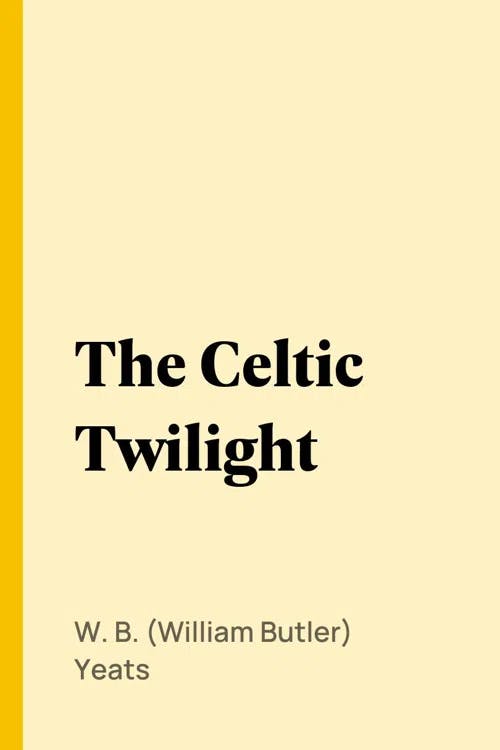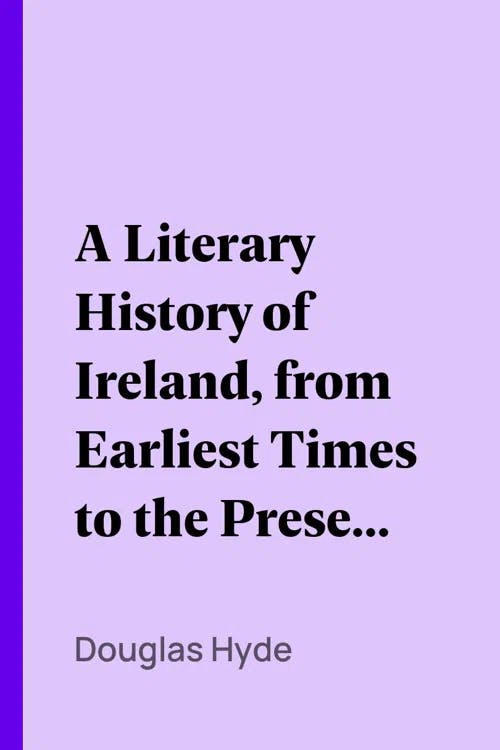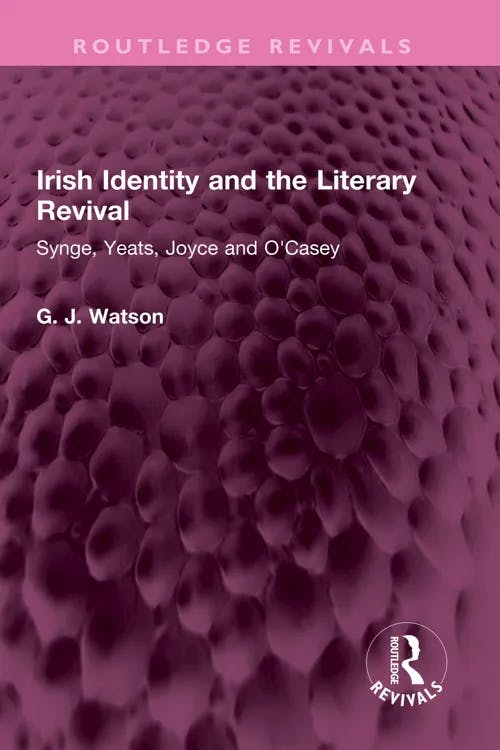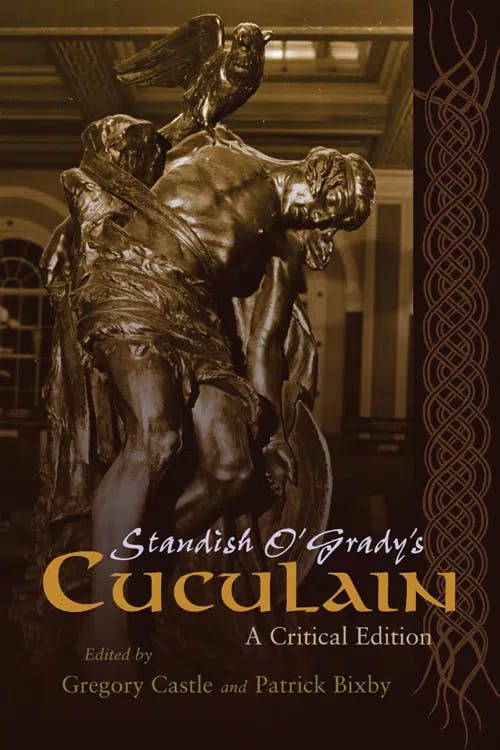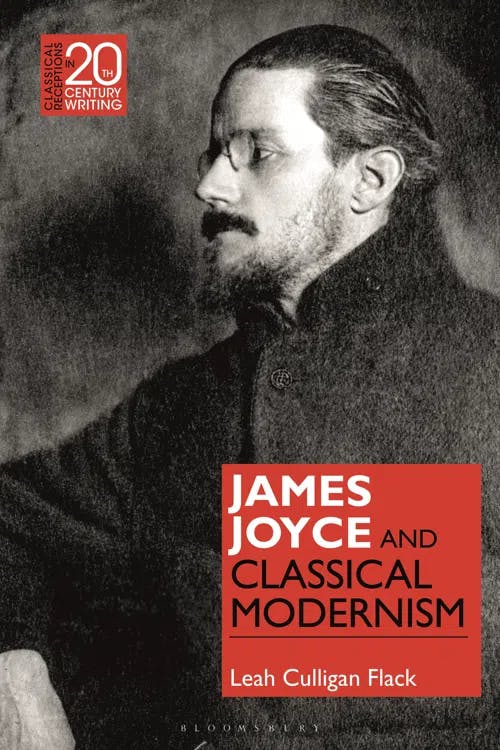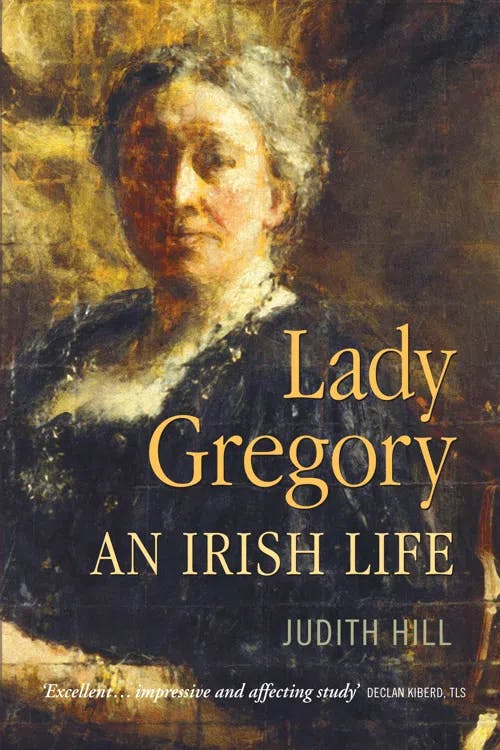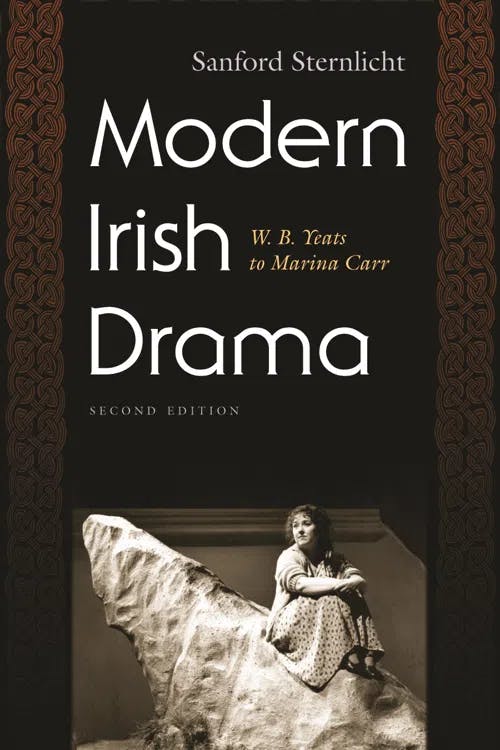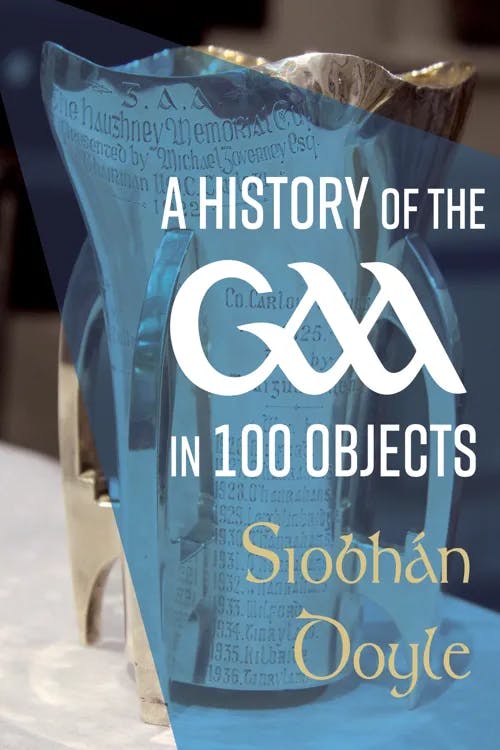What is the Irish Literary Revival?
MA, History (University of Edinburgh)
Date Published: 12.03.2024,
Last Updated: 05.04.2024
Share this article
Defining the Irish Literary Revival
During the late nineteenth and early twentieth centuries, Irish literature, art, theater, and culture flourished in what became known as the Irish Literary Revival, or the Irish Literary Renaissance, which was part of the wider Celtic Revival. This renaissance of Irish literature and culture thrived in the midst of political and social changes occurring across Ireland. Within Ireland, there was a cultural coexistence of the British, Irish, and Anglo-Irish as they shared a common language and had lived alongside each other for centuries; however, tensions began to boil as they differed widely on ideas and pressures related to politics, religion, and society. Irish nationalism became a focus for many of these writers and artists as they attempted to redefine the political landscape in Ireland. In the introduction to The Irish Revival (2023), Joseph Valente and Marjorie Howes describe how the various writers and artists in the Irish Literary Revival may have disagreed on issues of modernization and the preservation of agrarian ideals, but they could agree on one thing: resisting British control in Ireland. Valente and Howes explain, however, that sectarian differences still remained a significant obstacle:
[...] the various branches of the Revival came together at points in their resistance to British domination, a crucial aspect of revivalist “emergence,” but the persistence of sectarian differences, a key element in the separation of those branches, gave rein to disagreements over the nature of the resistance to be mounted, the form of decolonization to be achieved, and the proper understanding of both the indigenous, precolonial past and the consummate postcolonial futurity. (2023)
Edited Joseph Valente and Marjorie Howes
[...] the various branches of the Revival came together at points in their resistance to British domination, a crucial aspect of revivalist “emergence,” but the persistence of sectarian differences, a key element in the separation of those branches, gave rein to disagreements over the nature of the resistance to be mounted, the form of decolonization to be achieved, and the proper understanding of both the indigenous, precolonial past and the consummate postcolonial futurity. (2023)
You can learn more about sectarian differences in our study guide on the topic.
Developments of the Irish Literary Revival
The Revival had roots in Dublin and London, as Irish writers in both locations contributed — including W. B. Yeats, who spearheaded the Revival. In London in 1892, he set up the Irish Literary Society along with Irish writers T. W. Rolleston and Charles Gavan Duffy. Yeats then organized the National Literary Society in Dublin with the support of Douglas Hyde, who became the society’s first president (John S. Kelly, A W.B. Yeats Chronology, 2015). These societies especially focused on honoring Irish culture and warned against the dangers of imperialism.
In 1888, Yeats released Fairy and Folk Tales of the Irish Peasantry, a collection of writings from eighteenth and nineteenth century authors that explores issues related to colonialism, socialism, evolution, gender, and sexuality, among other topics. A few years later, in 1893, Yeats’s revolutionary work The Celtic Twilight was published. It explores Irish culture through the mystical and supernatural tales of Irish folklore. In his preface, Yeats indicates that the collection of stories is inspired by the real and the imagined, showcasing how reality and myth are entrenched in Irish literature and life:
I have desired, like every artist, to create a little world out of the beautiful, pleasant, and significant things of this marred and clumsy world, and to show in a vision something of the face of Ireland to any of my own people who would look where I bid them. [...] The things a man has heard and seen are threads of life, and if he pull them carefully from the confused distaff of memory, any who will can weave them into whatever garments of belief please them best. I too have woven my garment like another, but I shall try to keep warm in it, and shall be well content if it do not unbecome me. (1893, [2003])
W. B. Yeats
I have desired, like every artist, to create a little world out of the beautiful, pleasant, and significant things of this marred and clumsy world, and to show in a vision something of the face of Ireland to any of my own people who would look where I bid them. [...] The things a man has heard and seen are threads of life, and if he pull them carefully from the confused distaff of memory, any who will can weave them into whatever garments of belief please them best. I too have woven my garment like another, but I shall try to keep warm in it, and shall be well content if it do not unbecome me. (1893, [2003])
In much of his work, Yeats focuses on the lives of the ordinary people of Ireland, illuminating their beliefs and myths and exploring how these myths intersect with the history of the land. In 1899, fellow revivalist Douglas Hyde’s work A Literary History of Ireland, from Earliest Times to the Present Day was published. It focuses on the history of Ireland through Irish heroes, myths, and legends from known and forgotten Irish literature. In his preface, Hyde argues:
In both cases, that of the ancient and that of the modern Irish, all that is of most value as literature, was the property and in some sense the product of the people at large, and it exercised upon them a most striking and potent influence. And this influence may be traced amongst the Irish-speaking population even at the present day, who have, I may almost say, one and all, a remarkable command of language and a large store of traditional literature learned by heart, which strongly differentiates them from the Anglicised products of the "National Schools" to the bulk of whom poetry is an unknown term, and amongst whom there exists little or no trace of traditional Irish feelings, or indeed seldom of any feelings save those prompted by (when they read it) a weekly newspaper. (1899, [2016])
Douglas Hyde
In both cases, that of the ancient and that of the modern Irish, all that is of most value as literature, was the property and in some sense the product of the people at large, and it exercised upon them a most striking and potent influence. And this influence may be traced amongst the Irish-speaking population even at the present day, who have, I may almost say, one and all, a remarkable command of language and a large store of traditional literature learned by heart, which strongly differentiates them from the Anglicised products of the "National Schools" to the bulk of whom poetry is an unknown term, and amongst whom there exists little or no trace of traditional Irish feelings, or indeed seldom of any feelings save those prompted by (when they read it) a weekly newspaper. (1899, [2016])
With the influence of Hyde and Yeats, among other revivalist writers, a de-Anglicized view of Ireland came into focus and Irish voices, many in Gaelic, were finally heard.
Revival literature
The concept of Irish identity was a focus for these revivalist writers as they explored what it meant to be Irish under colonial rule and reflected on their Gaelic heritage. According to G. J. Watson in Irish Identity and the Literary Revival (2023), Revival literature explored various themes in relation to Irish society and politics:
The main focus is therefore on the relationship between the literature and its society; the unifying theme is each writer’s attempt to grapple with, or define, the nature or meaning of Irish identity, and the resultant effects on the content and form of their art. Subsidiary themes, closely connected, recur — attitudes to the peasantry and the problem of backward Ireland’s position in the modern world, to political nationalism seen as both dynamic and destructive, varying attitudes to the hero and the concept of heroism, to the meaning of Ireland’s history and the validity of her cultural traditions; and the recurring tension between the writer’s desire to identify with his community and his feelings of marginality.
G. J. Watson
The main focus is therefore on the relationship between the literature and its society; the unifying theme is each writer’s attempt to grapple with, or define, the nature or meaning of Irish identity, and the resultant effects on the content and form of their art. Subsidiary themes, closely connected, recur — attitudes to the peasantry and the problem of backward Ireland’s position in the modern world, to political nationalism seen as both dynamic and destructive, varying attitudes to the hero and the concept of heroism, to the meaning of Ireland’s history and the validity of her cultural traditions; and the recurring tension between the writer’s desire to identify with his community and his feelings of marginality.
As well as W. B. Yeats and Douglas Hyde, there were a number of other writers who were driving forces for the Revival, such as Standish O’Grady, James Joyce, and Lady Gregory. These writers supported the intertwining of folklore and history into their works, advocating for an interest in Irish culture and tradition in the face of British ideology on the island. Many of these authors focused on their marginalized place in society and encouraged fellow Irish creatives to use their writing as a form of protest against colonialism.
Standish O’Grady
Born in County Cork, Ireland, in 1846 and later educated at Trinity College Dublin, O’Grady was a renowned historian and journalist. He was inspired by fellow revivalist writers and argued for a renewal of interest in Gaelic tradition, mythology, literature, and history. In 1878, O’Grady’s History of Ireland, Vol. I: The Heroic Period was published, which explores the legends of ancient Ireland and focuses on the parallels between Gaelic and Greek heroes. He was inspired by historians such as Thomas Carlyle. You can learn more about Carlyle and theories related to heroism in our study guide on the great man theory.
In Standish O'Grady's Cuculain (2016), editors Gregory Castle and Patrick Bixby argue that within O’Grady’s History of Ireland, Vol. 2: Cuculain and His Contemporaries (1880), O’Grady seeks to intertwine both myth and historic fact to foster an understanding of the Gaelic world. O’Grady argues that historians should embrace legends and myths, as we can actually gain a deeper understanding of history through them. He also asserts that historians must embrace the notion that past, present, and future coexist, and adopt this in their work. As Castle and Bixby explain,
Throughout the History, which relates a “wild and improbable” narrative and departs significantly from mainstream British and Anglo-Irish historiography, particularly on the issue of what constitutes evidence, O’Grady insists on historical discipline — that is to say, he insists on the viability (if not always the veracity) of the bardic accounts and his ability to extract historical knowledge from them, no matter how unreliable they might be. [...] Rather than a teleological orientation along a progressive path, we have a form of romantic dialectics, a recursive and disjunctive historical field in which the past and future are interwoven, neither of them surrendering its singular temporality. The past does not progress into the present but coexists with it as one of its cultural expressions—a coexistence that O’Grady’s imaginative historiography attempts to capture. (2016)
Edited by Gregory Castle and Patrick Bixby
Throughout the History, which relates a “wild and improbable” narrative and departs significantly from mainstream British and Anglo-Irish historiography, particularly on the issue of what constitutes evidence, O’Grady insists on historical discipline — that is to say, he insists on the viability (if not always the veracity) of the bardic accounts and his ability to extract historical knowledge from them, no matter how unreliable they might be. [...] Rather than a teleological orientation along a progressive path, we have a form of romantic dialectics, a recursive and disjunctive historical field in which the past and future are interwoven, neither of them surrendering its singular temporality. The past does not progress into the present but coexists with it as one of its cultural expressions—a coexistence that O’Grady’s imaginative historiography attempts to capture. (2016)
Within his works, O’Grady ultimately seeks to uphold revivalist ideologies which de-Anglicize Ireland by supporting Irish culture, language, and literature.
James Joyce
A poet, writer, and critic, James Joyce was a prominent figure in the Irish Literary Revival. Born in Dublin in 1882 and educated at University College Dublin, Joyce is best known for Ulysses (1922), which follows the lives of three people in Dublin over the course of a day; A Portrait of the Artist as a Young Man (1916), an illustration of the intellectual and spiritual awakening of the fictional Stephen Dedalus; and Dubliners (1914), a collection of short stories examining the lives of middle-class families in Dublin in the early twentieth century. Within his writing, Joyce applies a variety of literary techniques prominent in modernist literature, including stream of consciousness. Joyce often reflects on Irish society and class, morality, colonialism, sexuality, and mythology, all present within his experimental poetry and prose.
In James Joyce and Classical Modernism (2020), Leah Culligan Flack explains that Joyce reinvented the meaning of the classics. His ability to create parallels between Greek mythology and Irish society through modernist literary techniques was revolutionary in the early twentieth century, and paved the way for future authors to experiment in their own work:
Rather than being an attack on the classics, Joyce’s work emerges from an increasingly visible sense of the classics as a tool of rebellion against convention. Rather than being a carrier of socially-affirmed meaning attesting to shared values in a community, Joyce’s classical writings tend toward ambiguity, antagonism, and the illicit. Therefore, one reason why we cannot call upon a static sense of the classical to describe Joyce’s fiction rests in the fact that early on, he himself abandoned this kind of notion and embraced a more unsettled model of what and how the classics might mean in the twentieth century. (Flack, 2020)
Leah Culligan Flack
Rather than being an attack on the classics, Joyce’s work emerges from an increasingly visible sense of the classics as a tool of rebellion against convention. Rather than being a carrier of socially-affirmed meaning attesting to shared values in a community, Joyce’s classical writings tend toward ambiguity, antagonism, and the illicit. Therefore, one reason why we cannot call upon a static sense of the classical to describe Joyce’s fiction rests in the fact that early on, he himself abandoned this kind of notion and embraced a more unsettled model of what and how the classics might mean in the twentieth century. (Flack, 2020)
Joyce left an indelible mark on Irish literature as he illustrated an Ireland swarming with complexity, contradictions, and development in the early twentieth century.
Lady Gregory
Lady Gregory was an influential figure in the Revival, as she wrote prolifically on Irish folklore and was an esteemed Irish dramatist. Born in County Galway in 1852, Lady Gregory was inspired by such contemporaries as W. B. Yeats. Her writing often retold stories from Irish mythology and, though she came from a wealthy Anglo-Irish background, she spoke out against British rule and disapproved of colonialism in Ireland. Her home in Coole Park, County Galway, served as a sanctuary for Irish Literary Revivalists who would meet there and discuss their ideas and writing (Judith Hill, Lady Gregory, 2011).
Lady Gregory’s interest in folk writing is recognized in her work A Book of Saints and Wonders (1906), in which she collects religious and folk stories from people in her community and retells them. Lady Gregory’s Gods and Fighting Men (1903) was also an influential piece of Revival literature. It tells the story of the Tuatha dé Danaan and the Fianna of Ireland, all translated into English by Lady Gregory. As indicated in Hill’s Lady Gregory, though she was often overshadowed by her male contemporaries and had her reputation tarnished by them (as many made up false accusations of her), Lady Gregory’s work continues to be celebrated to this day:
Her [Lady Gregory’s] subject was society, and most particularly the social and cultural values of her Galway neighbours as she understood them through her empathetic folklore. If she is judged according to traditional literary values she fails, though not absolutely. She needs to be understood as a cutting-edge folklorist, who realised the need to present the voices of her interviewees in as unmediated a way as possible, and as a writer who was able to translate this into plays. Her achievement emerges as an ability to present the values of a dying society to the metropolitan stage. Thus she made a decisive impact on Irish cultural nationalism. Arguably, her plays are still a largely untapped source for understanding this society. (Hill, 2011)
Judith Hill
Her [Lady Gregory’s] subject was society, and most particularly the social and cultural values of her Galway neighbours as she understood them through her empathetic folklore. If she is judged according to traditional literary values she fails, though not absolutely. She needs to be understood as a cutting-edge folklorist, who realised the need to present the voices of her interviewees in as unmediated a way as possible, and as a writer who was able to translate this into plays. Her achievement emerges as an ability to present the values of a dying society to the metropolitan stage. Thus she made a decisive impact on Irish cultural nationalism. Arguably, her plays are still a largely untapped source for understanding this society. (Hill, 2011)
Along with O’Grady, Joyce, and other Revival authors, Lady Gregory recognized the importance of Ireland on a global scale and wished to use her ambitious and sometimes conflicting views to honor Ireland through her writing and activism.
Revival theater
Part of the aim of the Irish Literary Revivalists was to put Irish literature on the world stage; therefore, these writers recognized the need for a theater scene in Dublin. In an article for the Dome for April 1899, W. B. Yeats laid out the idea for the Irish Literary Theatre. In May 1899 in Dublin, he was joined by Lady Gregory, Edward Martyn, a fellow Irish playwright and political activist, and other guarantors who all sponsored the early performances of Yeats’s The Countess Cathleen (1892) and Martyn’s The Heather Field (1899). The Irish Literary Theatre sought to represent Irish literature, instead of English literature, and it had a clear role in fostering nationalist ideology and promoting political independence from British rule. With the support of revivalists like Yeats, Irish theater encouraged mystical and occult elements in its productions (B.C. Bloomfield, Beltaine, 1970).
The Irish National Theatre Society was later founded in 1902 and, in 1904, the Abbey Theatre was founded in Dublin. The opening performances included Yeats’s mythological production On Baile's Strand (1903) and Lady Gregory’s comedy Spreading the News (1904). The Abbey Theatre was revolutionary, as it gave a platform for Irish playwrights to display their work on a larger, grander scale. Plays by Yeats, Lady Gregory, and Martyn were all staged, and a host of other playwrights found fame through the theater — including George Bernard Shaw, Sean O’Casey, Padraic Colum, and Thomas MacDonagh, among many others (Sanford Sternlicht, Modern Irish Drama, 2010). Sternlicht further explains the mission behind the Abbey:
The Abbey’s main mission remains primarily but not exclusively to produce plays by Irish playwrights on Irish themes. It has always been to a very large extent a writers’ theater. With its inception, ordinary people, peasant farmers, city workers, fisherfolk, back-country people, itinerants, small merchants, the poor, the sick, and the blind would find a place and a voice on the Irish stage, whereas the foolish and embarrassing, shifty, hot-tempered, lazy, conniving, often drunken, comic “stage Irishman,” speaking in a ludicrously exaggerated accent, was banished except for in historical revivals of early works. (2010)
Sanford Sternlicht
The Abbey’s main mission remains primarily but not exclusively to produce plays by Irish playwrights on Irish themes. It has always been to a very large extent a writers’ theater. With its inception, ordinary people, peasant farmers, city workers, fisherfolk, back-country people, itinerants, small merchants, the poor, the sick, and the blind would find a place and a voice on the Irish stage, whereas the foolish and embarrassing, shifty, hot-tempered, lazy, conniving, often drunken, comic “stage Irishman,” speaking in a ludicrously exaggerated accent, was banished except for in historical revivals of early works. (2010)
The Abbey Theatre has been a source of great pride for Irish people, as it became one of Europe’s most esteemed and important theaters. To this day, it remains a prominent fixture in Irish society.
Lasting legacy: the Gaelic League and the Gaelic Athletic Association
As the Irish Literary Revival was part of the wider Gaelic and Celtic revivals, it also coexisted with the Irish language movement. In 1893, Eugene O’Growney and Eoin MacNeill founded the Gaelic League (Conradh na Gaeilge), with Douglas Hyde as its first president. Its main focus was to preserve and promote Irish language, culture, art, literature, and music. The group met weekly to discuss Irish current affairs, and it successfully campaigned to make the Irish language part of the school curriculum. The league also printed its own newspaper, An Claidheamh Soluis. In May 1897, the Gaelic League hosted their first festival in Ireland with the goal of encouraging the public to participate in the Irish language movement. The league continues to maintain branches across Ireland as well as internationally (Janet Egleson Dunleavy and Gareth W. Dunleavy, Douglas Hyde, 1991).
In 1884 (in Tipperary, Ireland), the Gaelic Athletic Association (Cumann Lúthchleas Gael) was formed, with Maurice Davin, an internationally renowned athlete, as its first president. The GAA is an international sports organization that promotes traditional Irish sports like hurling, Gaelic football, and Gaelic handball. The organization also supports the Irish language, music, and dance. When the GAA was founded, its mission was to spotlight indigenous Irish sport and offer Irish people the opportunity to manage their own games without interference from foreign bodies (Cormac Moore, The GAA v Douglas Hyde, 2012).
In A History of the GAA in 100 Objects (2022), Siobhán Doyle states that though the GAA has some “deeply problematic” parts to it, and injustices exist within it, the association plays an influential role in Irish society and it has helped shape Irish history:
The GAA plays an important role in identity and place, with much to take pride in and celebrate. It contributes to the formation of place identity through diverse social interactions, practices and memories. [...]
It is abundantly clear that the GAA has evolved considerably since its formal establishment in 1884, in ways that connect intimately with major historical developments in Ireland. Its role has been transformed in tandem with significant moments in modern Irish history, such as the War of Independence, mass emigration and the Troubles.
Siobhán Doyle
The GAA plays an important role in identity and place, with much to take pride in and celebrate. It contributes to the formation of place identity through diverse social interactions, practices and memories. [...]
It is abundantly clear that the GAA has evolved considerably since its formal establishment in 1884, in ways that connect intimately with major historical developments in Ireland. Its role has been transformed in tandem with significant moments in modern Irish history, such as the War of Independence, mass emigration and the Troubles.
The GAA continues to play a crucial role in Ireland with its cross-community efforts and cultural initiatives, and its clubs can be found around the world.
Closing thoughts
The Irish Literary Revival was a time in which Irish literature and culture blossomed, with Irish voices reaching audiences near and far. These revivalist writers and artists illustrated a changing Ireland; an Ireland molded by politics, tradition, and an evolving society seeking to separate itself from British influences. They experimented with Irish legends and folklore, history and fact, intertwining these topics through poetry and prose. With such revolutionary figures as W. B. Yeats, Standish O’Grady, James Joyce, and Lady Gregory, Irish talent was displayed to Ireland and the wider world, with these figures and others making significant strides in literature, politics, and social reforms. Lesser-known writers, like Alice Milligan, Ella Young, and Katharine Tynan, were given a platform to exhibit their writing. These Revival writers and artists from the late nineteenth century and the early twentieth century inspired future writers on the island of Ireland. The likes of Seamus Heaney, Samuel Beckett, Edna O’Brien, and C. S. Lewis depicted elements of the Irish Literary Revival through their reflections on folklore, legend, morality, and the political and social changes witnessed on their beloved island.
Further reading on Perlego
Lady Gregory's Toothbrush (2011) by Colm Toibin
The Revival of Irish Literature (2010) by George Sigerson, Sir Charles Gavan Duffy, and Douglas Hyde
Modernists and the Theatre (2021) by James Moran
The Poems of W.B. Yeats (2023) edited by Peter McDonald
Early Bardic Literature, Ireland. (2005) by Standish O’Grady
James Joyce and Modern Literature (2015) edited by W. J. McCormack and Alistair Stead
Seven Short Plays (2012) by Lady Gregory
Irish Women Dramatists (2014) edited by Eileen Kearney and Charlotte Headrick
What is the Irish Literary Revival?
Who spearheaded the Revival?
What is an example of Revival literature?
What is an example of Revival theater?
How does the legacy of the Revival continue?
Bibliography
Bloomfield, B. (2012) “Editor’s Note,” in Yeats, W.B. (ed.) Beltaine: The Organ of the Irish Literary Theatre. Taylor and Francis. Available at: https://www.perlego.com/book/1685744/beltaine-routledge-revivals-the-organ-of-the-irish-literary-theatre-pdf
Castle, G. and Bixby, P. (eds.) (2016) Standish O’Grady’s Cuculain. Syracuse University Press. Available at: https://www.perlego.com/book/537718/standish-ogradys-cuculain-a-critical-edition-pdf
Doyle, S. (2022) A History of the GAA in 100 Objects. Irish Academic Press. Available at: https://www.perlego.com/book/3760456/a-history-of-the-gaa-in-100-objects-pdf
Dunleavy, J. E. and Dunleavy, G. (1991) Douglas Hyde. University of California Press. Available at: https://www.perlego.com/book/552115/douglas-hyde-pdf
Flack, L. C. (2020) James Joyce and Classical Modernism. Bloomsbury Publishing. Available at: https://www.perlego.com/book/1310677/james-joyce-and-classical-modernism-pdf
Gregory (2011) A Book of Saints and Wonders. Barnes & Noble Digital Library. Available at: https://www.perlego.com/book/3715884/a-book-of-saints-and-wonders-barnes-noble-digital-library-pdf
Gregory (2004) Gods and Fighting Men. Perlego. Available at: https://www.perlego.com/book/1845103/gods-and-fighting-men-the-story-of-the-tuatha-de-danaan-and-of-the-fianna-of-ireland-arranged-and-put-into-english-by-lady-gregory-pdf
Gregory (2012) Seven Short Plays. Perlego. Available at: https://www.perlego.com/book/1716362/seven-short-plays-pdf
Hill, J. (2011) Lady Gregory, an Irish Life. Gill Books. Available at: https://www.perlego.com/book/2815139/lady-gregory-an-irish-life-pdf
Hyde, D. (2016) A Literary History of Ireland, from Earliest Times to the Present Day. Perlego. Available at: https://www.perlego.com/book/1717386/a-literary-history-of-ireland-from-earliest-times-to-the-present-day-pdf
Joyce, J. (2020) A Portrait of the Artist as a Young Man. Vintage Books. Available at: https://www.perlego.com/book/2917868/a-portrait-of-the-artist-as-a-young-man-pdf
Joyce, J. (2017) Dubliners. Dreamscape Media. Available at: https://www.perlego.com/book/650224/dubliners-pdf
Joyce, J. (2017) Ulysses. Dreamscape Media. Available at: https://www.perlego.com/book/650222/ulysses-pdf
Kelly, J. S. (2015) A W.B. Yeats Chronology. Palgrave Macmillan UK. Available at: https://www.perlego.com/book/3501641/a-wb-yeats-chronology-pdf
Martyn, E. (1899) The Heather Field. Duckworth & Co.
Moore, C. (2012) The GAA v Douglas Hyde. Gill Books. Available at: https://www.perlego.com/book/2814871/the-gaa-v-douglas-hyde-pdf
O’Grady, S. (1878) History of Ireland, Vol. 1: The Heroic Period. Sampson Low, Searle, Marston, & Rivington.
O’Grady, S. (1880) History of Ireland, Vol. 2: Cuculain and His Contemporaries. Sampson Low, Searle, Marston, & Rivington.
Sternlicht, S. (2010) Modern Irish Drama: W. B. Yeats to Marina Carr. 2nd edn. Syracuse University Press. Available at: https://www.perlego.com/book/537828/modern-irish-drama-w-b-yeats-to-marina-carr-second-edition-pdf
Valente, J. and Howes, M. (eds.) (2023) The Irish Revival: A Complex Vision. Syracuse University Press. Available at: https://www.perlego.com/book/4218299/the-irish-revival-a-complex-vision-pdf
Watson, G. J. (2023) Irish Identity and the Literary Revival: Synge, Yeats, Joyce and O'Casey. Taylor and Francis. Available at: https://www.perlego.com/book/3837583/irish-identity-and-the-literary-revival-synge-yeats-joyce-and-ocasey-pdf
Yeats, W. B. (ed.) (2010) Fairy and Folk Tales of the Irish Peasantry. Perlego. Available at: https://www.perlego.com/book/1715784/fairy-and-folk-tales-of-the-irish-peasantry-pdf
Yeats, W. B. (2003) The Celtic Twilight. Perlego. Available at: https://www.perlego.com/book/1713335/the-celtic-twilight-pdf
Yeats, W. B. (2021) The Countess Cathleen. Mint Editions. Available at: https://www.perlego.com/book/2174372/the-countess-cathleen-pdf
Yeats, W. B. (2012) The King’s Threshold; and On Baile’s Strand. Perlego. Available at: https://www.perlego.com/book/1716356/the-kings-threshold-and-on-bailes-strand-pdf
MA, History (University of Edinburgh)
Hannah Hamill has a PGDE in Secondary Education (History) from the University of Glasgow and a Master’s degree in History from the University of Edinburgh. She also received a Bachelor’s degree in English from Belmont University. Her research interests include The Troubles in Northern Ireland, Medieval Britain, the American Civil War, and immigration to the southern United States. Her dissertation examined loyalist and republican women’s involvement during The Troubles.

